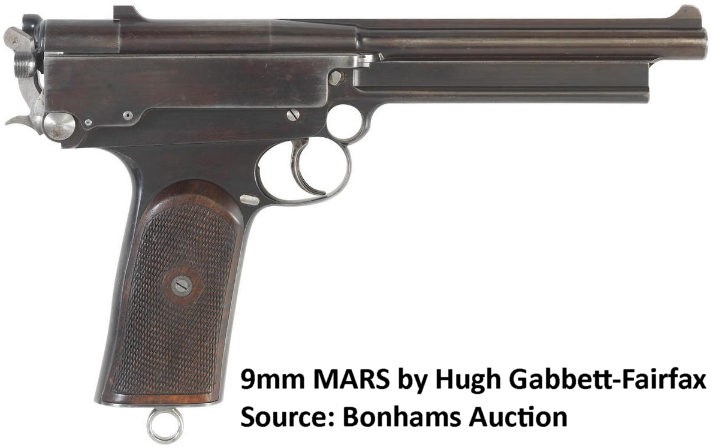



The Mars pistol was invented by Hugh Gabbett-Fairfax, who was an engineer and small arms designer. The design was an unusual one with a long-recoil system whereby the barrel and bolt moved together after firing, and the spent case was ejected directly backwards as the new one was loaded. The original arrangements around 1898 was for the guns to be produced by Webley & Scott, but the arrangement did not get off the ground and their partnership came to an end during 1900, with Gabbett-Fairfax personally funding production from 1901 onwards. Production was slow, due to the cost and complexity of the design and Gabbett-Fairfax declared bankruptcy at the end of 1903 after only approximately 56 pistols were manufactured. A consortium of creditors came to his rescue and took over his patents and continued to fund the production, but by 1907 they also were bankrupt after a total production of eighty pistols. The Mars was produced in four proprietary calibers: the .335/8.5mm Mars, .360/9mm Mars, .45 Short and .45 Long, which was for a time the most powerful handgun cartridge in the world. The original intention was for the Mars to replace the British Army’s Webley & Scott revolver, however after a series of military tests it was rejected by the British War Office, mainly on cost/complexity issues excessive recoil and muzzle flash, even though performance was more than satisfactory. Ammunition was produced by Eley. The first specimen with ELEY · LONDON · headstamp and small hollow point bullet was the first one produced and was called the .360 MARS. When the consortium wanted to market the gun in Europe, they changed from Imperial designation to Metric, hence the 9mm Mars. (Erlmeier, Brandt Ref. 129).

